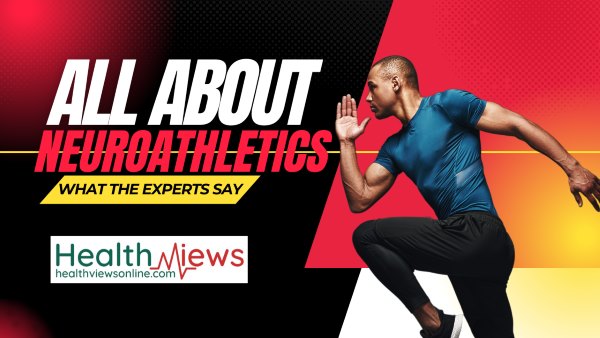Neuroathletics is a fast-growing training approach that treats the brain and nervous system as the first and most important “muscle” for performance, injury prevention and faster recovery. Instead of only exercising muscles, neuroathletics uses targeted drills and sensory challenges to make the brain send clearer, faster signals to the body. This short guide explains what it is, how it works, who it helps, and how doctors and physiotherapists are using it in practice.
What is Neuroathletics?
Neuroathletics (or neuro-athletic training) is a set of exercises and methods designed to improve the nervous system’s control of movement. It targets perception (vision, balance, touch), decision-making speed, timing and motor control so that athletes move more accurately and react faster. The core idea: better brain processing → better, safer movement.
How Neuroathletics Works — The Science
Every movement starts in the brain: sensory input → processing → motor output. Neuroathletics applies “neural pressure” through complex, timed tasks (for example, variable light targets, dual-task balance drills, eye–hand coordination challenges) to strengthen those brain-to-muscle pathways. Over repeated sessions the nervous system learns quicker, leading to faster reactions, improved coordination and reduced protective guarding (which often causes pain and limited movement). Modern programs pair this with motion sensors, reaction lights and VR to give precise feedback.
Neuroathletics Benefits — What the Research and Experts report
- Faster reaction time and decision speed. Training the perceptual systems helps athletes notice cues sooner and respond quicker.
- Better movement accuracy and coordination. Targeted drills improve fine motor control and timing.
- Lower injury risk and faster rehab. Adding neurocognitive challenges to standard injury-prevention programs improves outcomes and may reduce re-injury. Clinical commentaries and physio research support integrating cognitive tasks into rehab.
- Improved resilience to fatigue and stress. Brain-centred training helps athletes maintain technique under pressure and fatigue.
Also Read: Strength Training vs. Cardio: Which is Better for Weight Loss?
Typical Neuroathletic Exercises (easy examples)
Reaction light drills — hit or touch lights that illuminate in random order (builds fast decision-making).
Dual-task balance — perform a memory or visual task while balancing (improves stability under cognitive load).
Eye-tracking & saccade training — exercises that speed eye movements and improve visual sampling.
Vestibular/neck mobility drills — gentle head-turning with focus targets to retrain balance systems.
Who benefits most?
- Elite and youth athletes aiming to sharpen reaction times and prevent injury.
- Rehabilitation patients recovering from concussion, ACL injury or chronic pain — when neurocentric drills are combined with standard physio. MDPI
- Older adults who want to improve balance and reduce fall risk by training brain–body coordination.
Doctors’ and Therapists’ Inputs (what clinicians say)
Sports physicians, physiotherapists and neurotrainers increasingly recommend adding neurocognitive challenges to existing rehab and conditioning plans. Experts behind formal neuroathletic courses stress that these methods are complementary — not a replacement for strength, flexibility and sport-specific practice. Physiotherapy projects combining neuroathletics with classic neuro-rehab report faster gains in movement control and pain reduction when applied correctly by trained clinicians.
Tools and Technology used in Neuroathletics
Common tools include reactive light systems (e.g., FitLight), balance devices, eye-tracking software, VR/AR exercises and simple sensory props (balls, cones, wobble devices). These tools create measurable, progressively harder neural challenges that therapists and coaches can track over time.
Safety and Best Practice — a doctor’s checklist
- Assess first: Do a full clinical and neurological screen before starting neuroathletic drills.
- Individualise: Tailor intensity to the patient’s condition (age, injury stage, concussion rules).
- Combine treatments: Use neurocentric drills alongside strength, mobility and aerobic work.
- Measure & progress: Track reaction times, balance scores and symptoms; progress gradually.
- Use trained professionals: Only qualified physiotherapists, sports scientists or neuro-trainers should prescribe complex protocols.
Evidence and limits — what the science says
The field is promising but still evolving. Clinical commentaries and pilot studies show benefits when cognition is included in injury-prevention and rehab programs, but large randomized trials are limited. That means neuroathletics is best used as an evidence-informed add-on rather than a standalone cure-all. Ongoing research and standardised protocols will strengthen the evidence base.
Neuroathletics in India — opportunities for HealthViews readers
India’s sports and rehab community can benefit from neurocentric methods — from grassroots coaches to top sports academies. Clinics and physiotherapy centres should start with low-cost drills (balance, gaze work) and scale to tech tools as expertise grows. Doctors and physiotherapists should lead training, adapt protocols to local sports and monitor outcomes for publication — building an India-specific evidence base.
Conclusion
Neuroathletics moves training upstream — to the brain — where better sensing, decision and motor control start. When combined with standard conditioning and supervised by clinicians, it offers a safe, modern way to boost performance, reduce injuries and speed recovery. As research grows, neurocentric training will likely become a routine part of sports medicine and physiotherapy.
Sources & References
- Neuro Athletic Training Institute (overview & courses). NAT – Neuro Athletic Training
- “What is neuroathletics?” — Artztneuro neuroblog (practical summary). artztneuro.com
- “Benefits of neuroathletics” — Dextro Energy / product education. Dextro Energy*
- FitLight training & neuroathletics method (practical drills & rationale). fitlighttraining
- Clinical commentary: Integrating neurocognitive challenges into injury prevention training (PubMed). PubMed
- MDPI review: Physical Therapy in Neurorehabilitation with an Emphasis on Sports (applications for rehab). MDPI





